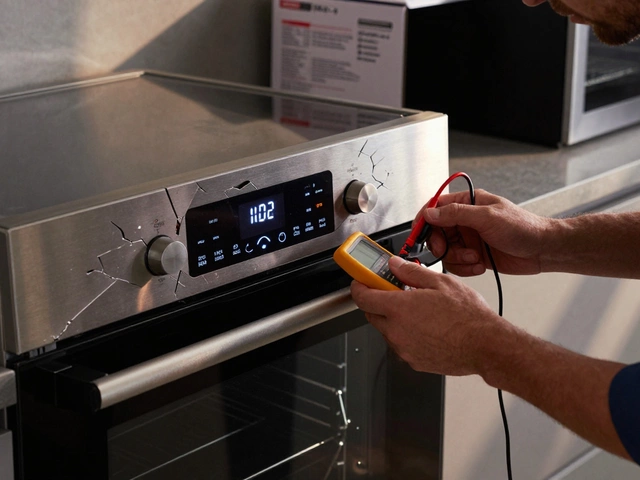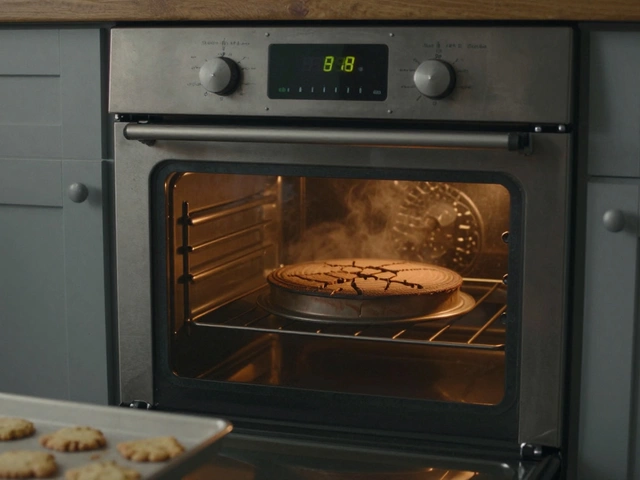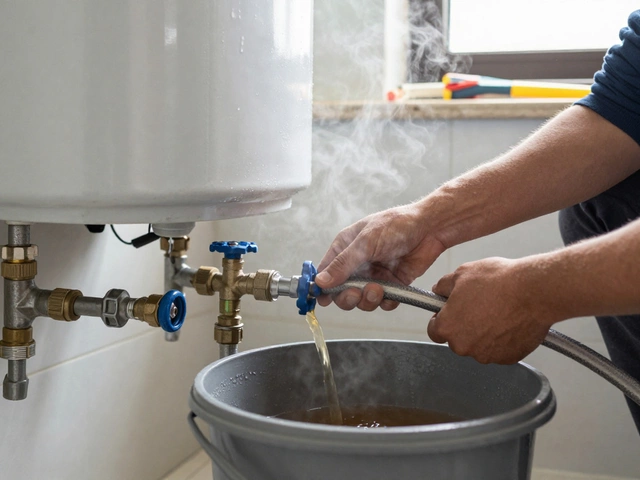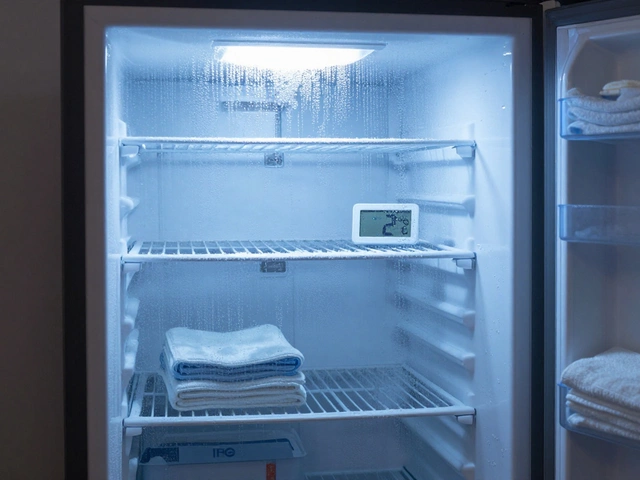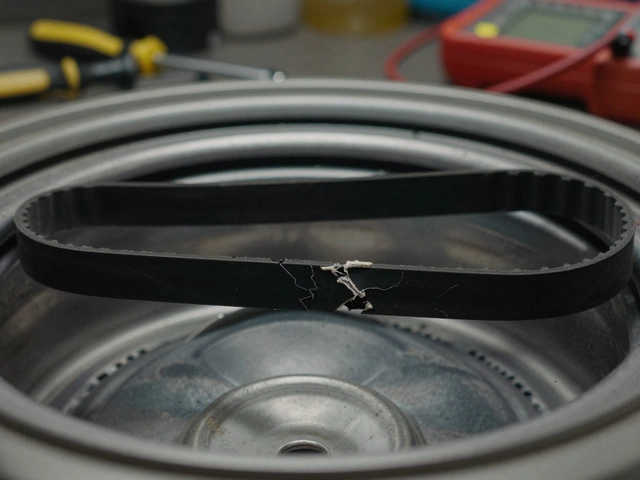Picture this: your pizza's coming out half-cooked on one side, burnt on the other. Something isn’t right. Electric ovens seem sturdy until they throw off weird results or stop working altogether. The first question—how do you even tell if yours is actually broken?
A dead giveaway is when the oven won’t turn on at all, or it won’t heat up. Start by checking if the display lights up or if it’s totally silent; sometimes the control board or fuse is the culprit. No lights or response? Make sure the oven is plugged in and your circuit breaker wasn't tripped. Those two steps can save you an embarrassing call to your repair guy.
Some problems are sneakier, though. If your oven takes forever to preheat, or you notice things cooking unevenly, it could mean the heating element is failing. Electric ovens rely on those glowing metal coils inside—if they’re not working or they’re patchy with their orange glow, you’ve found your suspect.
- Classic Signs Your Oven’s Acting Up
- Strange Noises, Smells, and Lights
- Common Heating Problems
- When to Try DIY Fixes
- When to Call a Pro
Classic Signs Your Oven’s Acting Up
You don’t need to be an appliance expert to spot trouble with your oven. There are some dead-simple signs that your electric oven needs attention—these go beyond just the food turning out weird.
- electric oven won’t turn on: If your oven stays completely dark and nothing happens when you try to use it, you’re looking at either a power issue or a major electrical problem inside.
- Error codes: Modern ovens love to flash codes on their digital displays. If you see codes you’ve never seen before, check your manual for a quick decode. Sometimes it’s just a door not shutting right, sometimes it’s a busted sensor.
- Unusual smells: Burning, melting, or chemical smells can warn you about electrical failures or built-up grime. A funky odor that won’t go away is your oven’s way of calling for help.
- Heat escapes: If the door doesn’t close fully or feels loose, you’ll notice a lot of heat leaking into your kitchen. That’s a sure sign of a busted or worn-out gasket.
- Random clicking, buzzing, or popping: These noises aren’t "just how it is." Clicking can mean the igniter’s struggling, buzzing could be a dying fan, and popping hints at problems with the heating elements.
Here’s a quick look at how these symptoms show up and what they might mean:
| Symptom | Possible Cause |
|---|---|
| Complete power loss | Tripped breaker, bad fuse, faulty control panel |
| Uneven or slow heating | Broken heating element, faulty thermostat |
| Weird smells | Burnt wiring, old food, melted insulation |
| Odd noises | Fan issues, failing relay, heating element problem |
| Error codes | Sensor or control board issues |
It helps to make notes of what you see, hear, or smell. If you know something’s off but can’t put your finger on it, trust your gut—most folks who catch a problem early save cash and hassle down the road.
Strange Noises, Smells, and Lights
Electric ovens are supposed to be pretty quiet as they run. If yours suddenly starts clicking, buzzing, or making popping sounds when heating up, that’s not normal. Clicking might mean an electrical relay isn’t working right. If you hear grinding or scraping, the fan motor could be wearing out. Even a light humming can spell trouble if it’s new for your appliance.
Smells are another solid clue. If you catch a sharp burning smell (something more than last night’s pizza cheese), kill the power and check the inside for burnt wiring, melted plastic, or scorched food stuck near the heating element. A chemical or ozone scent can point to overheating wires or insulation. Good ovens don’t smell like burning plastic—this is a sign something needs fixing fast.
Lights on your oven tell stories if you pay attention. If the display flickers or goes dark, it could signal a control board issue or bad connections. Interior lights that don’t turn on even after changing the bulb? Sometimes, it's the door switch, but if new bulbs don’t work, look for deeper electrical problems.
Here's a simple breakdown of what common sights, sounds, and smells might mean:
- Burning smell: Possible shorted wires or burnt food on the heating element.
- Clicking or popping noise: Electrical relays struggling or broken heating element.
- Flickering display: Faulty control board or loose wiring.
- Loud buzzing or humming: Aging fan motor or bad electrical contact.
- No interior light: Bad bulb, faulty switch, or deeper electrical issue.
According to appliance service data from 2024, the most reported non-heating issues with electric ovens were related to strange smells and display glitches. Here’s a snapshot:
| Problem Type | Share of Oven Service Calls (%) |
|---|---|
| Burning Smell | 33 |
| Display Glitches | 28 |
| Unusual Noises | 22 |
| Interior Light Failure | 17 |
If you notice any of these issues with your electric oven, it’s best not to ignore them. Some fixes are simple, but ignoring them can turn a small problem into a pricey repair fast.

Common Heating Problems
If your oven just doesn’t seem to get hot enough—or maybe it cranks to volcanic levels—something’s off with the heating system. Most electric ovens use two main heating elements: one at the bottom for baking and another up top for broiling. When either gives out, your cooking gets weird real fast.
Here’s what to watch for:
- Uneven heating: Cakes lopsided, or pizzas crisp on one side but soggy on the other? Usually, this means a heating element is on its last legs.
- No heating at all: If you switch on bake or broil and nothing happens—not even a flicker—chances are the element is done for or there’s a bad wire connection inside.
- Taking forever to preheat: An oven dragging its feet to reach temperature could mean the thermostat is busted or the element’s only half working.
- Temperature all over the place: If your meals come out uncooked in the middle or scorched on top, your oven’s sensor might be reading falsely or the control board is acting up.
It helps to know what’s normal. Most electric ovens heat up to 350°F in 10-15 minutes. If yours lags behind, it’s a red flag.
| Symptom | Possible Cause | Average Repair Cost (USD) |
|---|---|---|
| Uneven Baking | Faulty heating element | $100 - $250 |
| No Heat | Blown fuse / bad element | $120 - $300 |
| Slow Preheat | Malfunctioning thermostat | $80 - $200 |
| Wrong Temp | Broken sensor / control board | $150 - $400 |
A quick trick: turn the oven on, let it preheat, and take the temp inside using a cheap oven thermometer. If what you read and what the display says are miles apart, something’s up. Most folks find this handy before spending money on parts or calling in a pro. And remember, the electric oven is only as good as its weakest part—so don’t ignore those off temps or slow preheats.
When to Try DIY Fixes
Not every electric oven issue means it’s time to call for backup. A lot of basic problems have easy fixes, and you could save money (and pride) by trying a few things yourself. Here’s how to decide when rolling up your sleeves makes sense.
If your oven isn’t turning on, check the obvious stuff first. Is it plugged in? Sounds basic, but plenty of people have unplugged their oven to clean behind it and forgotten to plug it back in! If that looks good, your next stop is the circuit breaker. Flip it off and on again. Sometimes, a power surge will trip the breaker and cut power to the oven.
When the oven powers up but won’t heat, try inspecting the heating element. On most models, you can spot obvious issues—burn marks, breaks, or a section that stays dark when the oven is on. If you see any of those, replacing the element is usually pretty simple. Make sure the oven’s unplugged, unscrew the old part, and swap in the new one (your local hardware store probably has replacements).
Here’s a quick guide to safe fixes most people can handle at home:
- Resetting the house circuit breaker
- Inspecting and cleaning the heating elements (let everything cool down first!)
- Replacing visible burnt-out bulbs inside the oven
- Checking the oven’s settings—sometimes the timer or child lock is on by accident
- Cleaning the oven’s sensor (wipe carefully with a damp cloth, no harsh chemicals)
Don’t just take my word for it. According to appliance repair pro James Dyball from "NYC Appliance Repairs":
"Most oven problems that show up suddenly tend to be power or heating element related, which are often fixable without special tools. If it takes you more than 20 minutes to troubleshoot, that’s when I suggest calling someone."
Don’t ignore safety. Don’t go poking around live wires. If your oven smells like burning plastic, the panel is hotter than usual, or you spot sparks, leave it to the pros.
Here’s what folks tend to fix themselves versus jobs that usually need a technician:
| DIY Job | Call a Pro |
|---|---|
| Replace heating element | Repair touchpad/display |
| Reset breaker | Fix thermostat |
| Replace bulb | Deal with wiring issues |
| Clean sensor | Oven not calibrated |
Bottom line: if you’re not dealing with plumbing, gas lines, or deep electrical guts, and you feel confident, a simple fix or two could solve your problem fast.

When to Call a Pro
Sometimes, even the handiest person knows when to back off and bring in a real technician. Messing with high-voltage parts or digging around internal controls isn’t just tricky—it can be dangerous. Here’s when it’s time to stop Googling and call someone who knows their way around electric oven repair.
- Electric oven doesn't power on—no lights, no sound, nothing. If you’ve already checked the plug and circuit breaker, it could be a blown thermal fuse or a dead control board. Both are risky to replace yourself.
- You smell burning electrical parts or see smoke when the oven’s on. That likely means wiring or components have cooked themselves. Don’t even try to guess which part is bad—turn off your oven and leave it off.
- The oven trips your circuit breaker every time you use it. This usually points to a short circuit—definitely pro territory to avoid shocks or damaging your house’s wiring.
- The main control panel (with digital displays or dials) is unresponsive or shows error codes you can’t clear. Modern ovens are basically computers, and poking around inside could void your warranty or make things worse.
- You see exposed wires, broken heating elements, or sensors dangling loose. This is more than a DIY project and messing with it could end in injury or fire.
According to a 2024 Home Appliance Safety Report, around 25% of kitchen electrical fires are traced back to attempts at home appliance repairs without proper knowledge. The chart below shows just how risky some of these fixes are compared to calling certified techs:
| Repair Attempted | Home Repair Injury Rate | Certified Technician Injury Rate |
|---|---|---|
| Replacing heating element | 12% | 2% |
| Fixing wiring/controls | 20% | 1% |
If your oven's less than a year old, check your warranty before calling anyone. Most major brands will send a pro for free or for a small fee. No one wants to pay out-of-pocket when it could be covered. And remember—when in doubt, don’t risk it! Getting a professional’s eyes on the problem keeps your kitchen (and yourself) safe.





